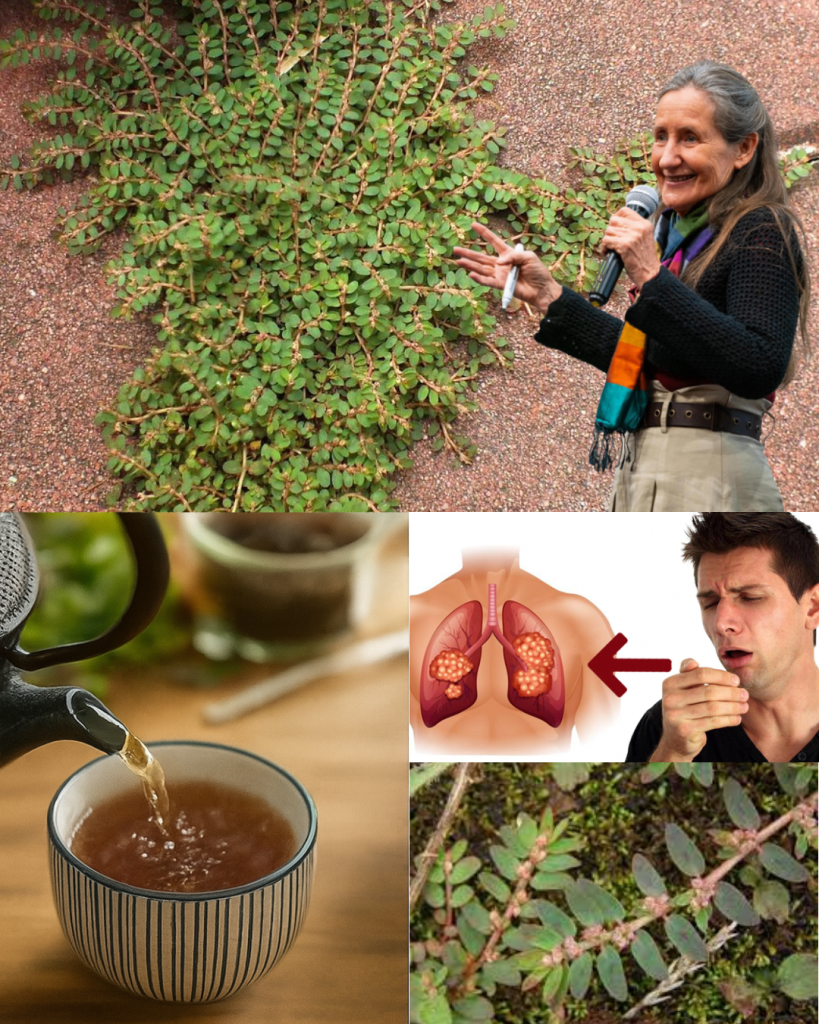Have you ever walked past a patch of unassuming weeds and wondered if they hold secrets to better health? Euphorbia thymifolia, a small, prostrate herb, might look like just another plant, but it’s a powerhouse in traditional medicine. Known as laghududhika or choti-dudhi in India, this humble member of the Euphorbiaceae family has been used for centuries to treat ailments from digestive issues to respiratory problems. If you’re curious about natural remedies or seeking alternatives to synthetic drugs, this tiny herb could spark your interest. Let’s dive into its fascinating world and uncover why it’s more than just a weed.

What Is Euphorbia thymifolia?
Euphorbia thymifolia is a small, annual herb that thrives in tropical and subtropical regions, including Asia, Africa, and the Americas. Often found in disturbed habitats like sidewalks or fields, it grows low to the ground, with stems stretching up to 25 cm long. Its tiny, opposite leaves are ovate to oblong, and its inconspicuous flowers form clusters called cyathia. Despite its modest appearance, this plant is a treasure trove of medicinal compounds, making it a staple in traditional healing systems like Ayurveda.
- Common Names: Laghududhika, choti-dudhi, thyme-leaved spurge
- Family: Euphorbiaceae
- Habitat: Tropical and subtropical regions, often in disturbed soils
- Growth: Prostrate, annual, with adventitious roots
This plant’s ability to grow in harsh conditions, like drought or poor soil, makes it a resilient survivor, much like its role in healing. But what exactly makes it so special?
The Medicinal Magic of Euphorbia thymifolia
Why has Euphorbia thymifolia been cherished in traditional medicine for centuries? The answer lies in its rich phytochemical profile. The plant contains flavonoids, tannins, terpenoids, and steroids, which contribute to its wide-ranging therapeutic effects. From Africa to Asia, it’s used to treat everything from dysentery to asthma, offering a natural alternative for those wary of modern drugs’ side effects.
Key Medicinal Uses
Here’s a glimpse into how this herb is used across cultures:
- Digestive Health: Decoctions of the plant are taken to relieve diarrhea, dysentery, and enteritis, soothing the gut naturally.
- Respiratory Relief: In Ayurveda, it’s prescribed for bronchial asthma and coughs, helping to ease breathing difficulties.
- Skin Conditions: The latex and leaf extracts are applied to treat skin irritations, wounds, and infections.
- Antiviral Power: Studies suggest it may combat viruses like herpes simplex virus (HSV-2) and tomato spotted wilt virus.
- Blood Sugar Control: Research shows antihyperglycemic effects, making it a potential aid for managing diabetes.
The plant’s versatility is astounding, but its milky latex comes with a warning—it can be caustic, causing skin irritation or even temporary blindness if mishandled. Always consult a professional before using it.
Phytochemical Powerhouse: What’s Inside?
The secret behind Euphorbia thymifolia’s healing prowess lies in its chemical makeup. Scientists have identified several bioactive compounds that drive its pharmacological effects:
- Flavonoids: Quercetrin and cosmosiin, known for their antioxidant and anti-inflammatory properties.
- Tannins: Hydrolysable tannins that offer astringent and antimicrobial benefits.
- Terpenoids: Including cymol and carvacrol, which contribute to its antibacterial and antiviral effects.
- Steroids and Phenolics: These compounds support its anti-inflammatory and analgesic actions.
These components work together to make the plant a natural pharmacy, tackling inflammation, infections, and even pain. But how can you harness its benefits safely?
How to Use Euphorbia thymifolia: A Step-by-Step Guide ✅
Ready to explore Euphorbia thymifolia for its medicinal potential? Below is a simple process for preparing a decoction, commonly used in traditional medicine for digestive or respiratory issues. Note: Always consult a healthcare provider before using herbal remedies, as improper use can be harmful.
Decoction for Digestive or Respiratory Relief
Ingredients:
- 10–15 fresh or dried Euphorbia thymifolia leaves
- 1 cup (250 ml) water
- Optional: Honey or lemon for taste
Steps:
- Harvest Carefully: Collect fresh leaves from a clean, pesticide-free area. Wear gloves to avoid contact with the latex.
- Wash Thoroughly: Rinse the leaves under running water to remove dirt or impurities.
- Boil the Leaves: Place the leaves in a pot with 1 cup of water. Bring to a boil, then simmer for 10 minutes.
- Strain the Liquid: Use a fine mesh strainer to separate the liquid from the plant material.
- Cool and Consume: Let the decoction cool slightly. Add honey or lemon if desired, and drink in small sips (1–2 tablespoons, 2–3 times daily, as advised by a professional).
- Store Safely: Refrigerate any leftover decoction and use within 24 hours.
Caution: Do not exceed recommended doses, as large amounts may cause irritation or toxicity. Avoid contact with eyes or broken skin.
Growing Euphorbia thymifolia at Home 🌱
Want to cultivate this herb yourself? Euphorbia thymifolia is low-maintenance and perfect for beginners. Its drought-tolerant nature and rapid growth make it an easy addition to your garden or a pot.
Growing Tips
- Soil: Well-drained, slightly acidic to alkaline soil.
- Light: Full sun to partial shade.
- Watering: Water sparingly; the plant thrives in dry conditions.
- Propagation: Seeds germinate quickly with no dormancy period. Scatter them in prepared soil and keep moist until sprouting.
- Care: Watch for overwatering, which can cause root rot. Use raised beds in rainy areas.
This plant’s ability to thrive in tough conditions mirrors its resilience in healing, making it a rewarding choice for home growers.

Potential Risks and Precautions
While Euphorbia thymifolia offers impressive benefits, it’s not without risks. The milky latex is toxic and can cause skin irritation, blistering, or eye damage. Ingesting large amounts may lead to nausea, vomiting, or more severe effects. Pregnant or breastfeeding individuals should avoid it, as some studies note abortifacient properties.
- Handle with Care: Use gloves when harvesting or preparing the plant.
- Consult Experts: Work with a trained herbalist or doctor to determine safe dosages.
- Avoid Adulterants: Ensure you’re using Euphorbia thymifolia, as it’s often confused with similar species like Euphorbia hirta.
